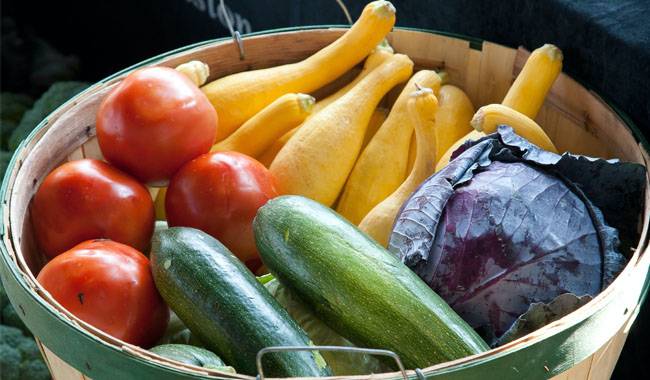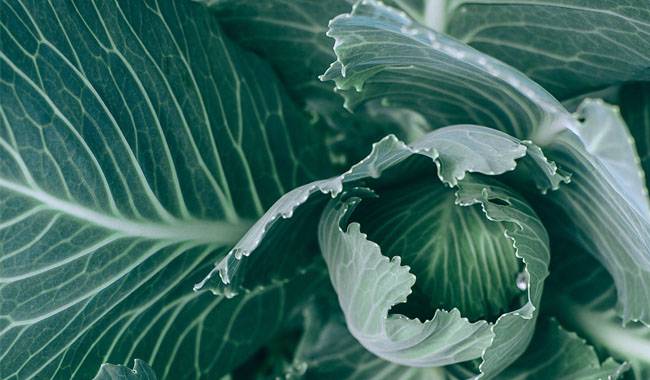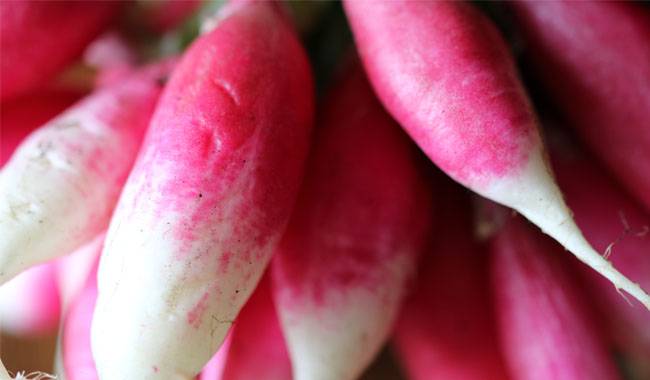
Even if you live in an area with a short summer season, you can still enjoy a bountiful harvest from your own garden. The key is to choose the right plants and varieties.
To extend the maximum production period of your plot, you can include crops with a short growing period in your list of vegetables.
By doing so, you will be able to have a bumper crop in early summer and reseed and fastest-growing at the end of the season, enjoying fresh vegetables in the fall as well.
SPECIFICS OF SELECTING VEGETABLES FOR A QUICK HARVEST
Most vegetable crops used for early harvest are able to continue intensive growth and development in cooler weather. They are also among the plants that respond positively to short daylight hours conditions. Recall that the number of hours of maximum sunlight a plant receives has a significant impact on the vegetative stage of various crops.
In this regard, the so-called “all-weather” crops are mainly suitable for rapid harvesting in spring and autumn. With a total light exposure of more than 13 hours per day, these plants get the signal to form flowers, fruits, and seeds.
Since in many cases edible roots and vegetation have an edible value, the development of these organs is most intensive during short daylight hours and useless flowering does not occur.
Primarily, the crops best suited for rapid harvest in early summer and fall include many root crops, leafy greens, and a number of other vegetables.
To find out if a species or variety is suitable for fall planting, look up the average number of days before harvest on the seed packet and add a week or two to take into account the lower light intensity in the fall.
In this way, you can easily see if the plant has a good chance of being harvested before the first frost when sown in late summer.
It’s also important to understand the basic characteristics of certain plants so you don’t plant too early or too late. For example, lettuce seeds may not germinate when the temperature rises above 80°F (27°C).
In addition to influencing the length of daylight, cold hardiness and the ability of seeds to germinate at low temperatures will be decisive factors when selecting plants for a quick spring harvest.
Carrots
Of course, we are not talking about the harvest of all carrots used for winter storage. But agreed – it’s always nice to nibble on the tail of even a small carrot straight from the bed. Baby carrots have a delicate, sweet flavor and can be used in soups, salads, and baby food.
Another advantage of carrots is that they can withstand a light back frost – up to 28°F (-2°C) or the first light frost of fall – down to 23°F (-5°C).
Carrot seeds begin to germinate at 41°F (5°C) but emerge in large numbers at 59-68°F (15-20°C). Despite increased cold tolerance, it is important to harvest seeds in late summer before the ground freezes to prevent the decay of tender root crops.
To select early harvest carrots, choose early maturing varieties that are ready for consumption at the milk ripening stage after 50-60 days. These varieties can be harvested without waiting for full maturity and are ready for use when the “shoulder” reaches 0.8-1.2inch (2-3cm) in size.
When selecting varieties, it is also worth paying attention to the so-called bundled carrots, which are specially designed for harvesting at a young age.
Bok choy, or Asian cabbage

An unusual leafy vegetable with edible leaves and petioles that has a characteristic pleasant flavor and a piquant aftertaste. The leaves can be green or purple and arranged in small vase shapes, which gives the vegetable a very attractive appearance.
This variety of cabbage does not require as many growing conditions as its sister cabbage. Due to its fast growth rate, cabbage can be ready for its first harvest in only 30 days.
The young leaves of Asian cabbage are great for stir-fries, as a topping for soups or fresh salads. It is important to harvest carefully to prolong productivity. To do this, carefully cut off the outer leaves and allow the core to continue growing.
Kohlrabi easily tolerates short frosts down to 24°F (-4°C) and wet, rainy weather. In spring, when the soil warms to 37-39°F (3-4°C), seeds of this cabbage can be sown. To extend the harvest, sow 2-3 waves of Asian cabbage 7-10 days apart.
Sowing for the fall harvest should be done immediately after the summer heat has dropped, otherwise, the seedlings may turn into arrows.
Lettuce
The leafy lettuce variety takes only 30 days to reach the table. The seeds of this cold-resistant green are able to start germination at 41-43°F (5-6°C) and seedlings can survive air temperatures down to -2 degrees.
Another feature of the lettuce is that it is grown using a transfer method at several weekly intervals so that there is a constant supply of fresh rosettes on the bed. For optimal growth and development, the optimum temperature should be maintained at 68°F (20°C). Cooler weather will increase the intensity of the red and brown leaf color of this variety.
You can grow lettuce only if nighttime temperatures are consistently positive and do not fall below freezing (starting around mid-April). In this case, the risk of short-term frost should be between -1 and -2 degrees. In summer, it is better to sow lettuce near the end of August, because new shoots do not appear easily at temperatures above 27 degrees.
It is also possible to grow lettuce as a winter crop. To do this, sow seeds in November in a prepared bed, in frozen soil, to avoid premature germination in the fall.
Lettuce leaves come in many colors and leaf disc shapes, so they can have a very wide range of culinary uses, giving an original look to salads and sandwiches. When harvesting, the rosettes can be cut off completely or only the outer leaves can be separated to give the plant a chance to continue growing and producing more leaves.
Lettuce varieties with dark leaves, while looking smart and creative, taste more bitter.
Mizuna
Mizuna or “Japanese mustard greens” is another exotic cabbage variety that is just beginning to gain popularity among gardeners. This crop does not form cabbages but rather establishes a bush of 16-20inch (40-50 cm) in height. The leaves of watercress are very decorative – they are unusual among cabbages in being pinnate.
Depending on the variety, they may be green or purple in color. Gastronomically speaking, mizuna leaves are characterized by a slightly bitter taste and a characteristic mustard flavor. The young leaves of Japanese cabbage are ready for picking about 20 days after germination when they are about 2inch (5cm) long.
After about 50 days, the whole rice should be cut down, in which case the tracts should be trimmed to the ground. If the shrub is kept until the end of the season, a small conical thickening will form at the base of the stem, which can also be eaten (water hyacinth stems are similar to rutabagas in flavor).
Japanese cabbage is hardy and can be expected to germinate at temperatures of 37-39°F (3-4°C). Seedlings may survive a brief frost at 23°F (-5°C). To obtain continuous delivery of vitamin vegetables, it is recommended that seeds be sown in several stages, 12-15 days apart.
The textured, leafy leaves of this crop are used to garnish fresh dishes and look good when combined with salad greens, steamed and fried in leafy dishes sturdy enough to withstand cooking.
Peas
Green peas are one of the favorite vegetable crops for children and are equally popular among adults. In addition, they are excellent green manure that enriches the soil with nitrogen and serves as a precursor to many other vegetable crops in the flowerbed.
Peas are adversely affected by high temperatures, so they are best planted in the spring or late summer. Seeds can be started as early as the end of April. Peas begin to germinate at 42°F (6°C), but the optimum temperature is still considered to be 50°F (10°C).
If the soil has warmed sufficiently, you should resort to soaking the seeds to obtain fast and friendly germination. To do this, peas should be soaked in water at room temperature for about 12 hours. It is advisable to change the water regularly, every 3 hours, after which it is best to dry the peas for sowing.
Peas for the autumn harvest should be sown in July and August. Early maturing varieties mature in 1.5 months and young pods for shoveling are harvested even earlier.
Radish

Radish can be called without exaggeration the most popular early root vegetable. This vegetable is ready for harvest about 30 days after sowing or when the tops of the heads reach about 1inch (2.5 cm) in diameter. Incidentally, the tops of radishes are also edible and can be used in salads and other dishes.
Radishes grow only in short sunlight until about the beginning of June. They can be sown from March (in the greenhouse) until the end of April. Radish seeds can germinate even at slight subzero temperatures of 28-30°F (-1 to -2°C). However, temperatures of 59-68°F (15-20°C) are most favorable for friendly germination. In this case, the seeds will germinate within 3 days.
If the temperature is lower, they will germinate in 6 to 12 days. When selecting early harvest radish varieties, you should keep in mind that the maturity period indicated on the package is valid only at a constant temperature of 59-86°F (15-30°C). However, when growing vegetables in the open field, constant temperature fluctuations are inevitable, so root crops will take longer to ripen.
Green onions
Many gardeners continue to harvest green onions the old-fashioned way, sticking the mature bulbs in the ground. However, really delicate thin plumes of onions can be obtained by growing seedlings from seed, in which case not only the vegetable but also the young onion bulbs can be used as food.
For this purpose, special varieties of so-called salad onions are usually used. Young onions with heads no thicker than a pencil are ready for harvest within 30 days after sowing.
Onions can be sown fairly intensively, as a gradual harvest allows the small heads to be pulled out of the soil, allowing the remaining bulbs to continue to grow and develop. As onions age, their flavor will only get bigger and their texture will become sharper. Many varieties overwinter well outdoors and will begin growing as a traditional onion “by the head” next spring.
Although onions are a fairly hardy crop, they are best sown outdoors when the average daily temperature is 53°F (12°C).
Swiss chard
Swiss chard, or leafy beet, is an excellent vegetable for soups, stuffings, and vegetable stews. After 45 days of germination, the fresh, new leaves are ready for harvesting. Harvesting takes significantly longer, starting with the youngest leaves, which are about 4inch (10cm) large, and the leaves in the center of the rosette will continue to grow.
In general, mustard is more heat tolerant than root beets, but its seeds can germinate for two weeks at 41°F (5°C). At higher temperatures, sprouts appear more quickly, within about a week. Red beet seedlings can tolerate brief frosts, and temperatures down to 26°F (-3°C) are absolutely fine, but longer temperature drops may cause growth to stop temporarily.
Unlike many early vegetables, beets are not affected by high temperatures and rarely bloom with the onset of long daylight hours, so they can be planted in the spring and used freely into the fall. Individual bushes of leafy beet can be successfully overwintered and will start growing again in the spring once the soil warms up.
Chard
Chard is a well-known relative of cabbage that was once very popular in the United States. Today, it is grown as a primitive curiosity – to diversify the vegetable menu. By the way, turnips, like Chard, can be eaten not only from the roots but also from the above-ground parts. The herb is ready for cooking in only 30 days, while the root crop is harvested after about 60 days.
Due to their high resistance to cold, Chard seeds can germinate at temperatures of 1-3 degrees. However, friendly and fast sprouting occurs only at temperatures of 46-50°F (8-10°C). Meanwhile, seedlings can withstand major frosts down to 21°F (-6°C) and adult plants remain vigorous even at 17°F (-8°C).
Keep in mind, however, that early-maturing varieties are less resistant to frost than late-maturing varieties. At the same time, the lower temperatures make radishes taste sweeter.
In the middle of the United States, sowing radishes is done in late April and early May. For fall harvest, root crops are sown in July. The crop is usually ready for harvest after 50-70 days. Radishes can also be used at the milk ripening stage when the roots are about 2inch (5cm) in diameter.







